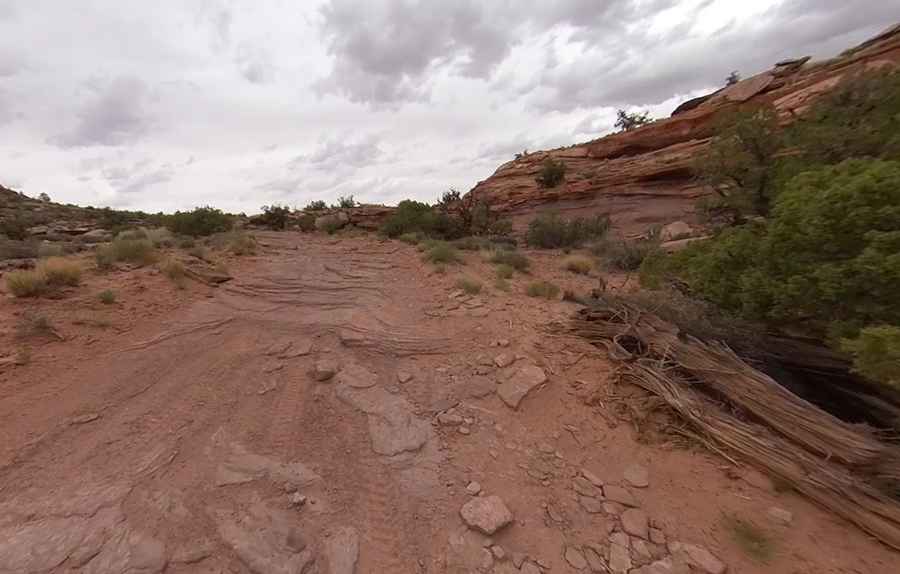Amasa Back Trail is a classic ride of Moab
Amasa Back Trail is a challenging trail located in Grand County, in the US state of Utah. It’s one of the classic rides of Moab.

Where is Amasa Back Trail?
The trail is located southwest of Moab, in the eastern part of Utah.
How long is Amasa Back Trail?
The trail is 6.92 km (4.3 miles) long.
Is Amasa Back Trail unpaved?
Yes, the trail is completely unpaved.
How challenging is Amasa Back Trail?
The trail features an altitude change of 1,050 feet, with about 1,300 vertical feet of tough and rough climbing. This wild trail, also known as the Cliffhanger Safari Route, ascends from Kane Creek on the Colorado River just west of Moab, climbing up onto an outcropping of rock surrounded on three sides by the Colorado River.
What are the obstacles on Amasa Back Trail?
Real challenges await with incredible scenery, especially at the end. Aggressive driving can result in rollovers, and one high ledge road is particularly intimidating. The trail is full of rock obstacles from start to finish, with technical challenges that will stop all but the most advanced riders.
Can intermediate riders manage Amasa Back Trail?
Strong intermediates can manage this ride, but will walk most of the rougher climbs. The road rises steadily, and there are some difficult sections. The jeeps driving this trail create slippery undercut ledges with chunky cobble, which complicates the approach.
What is the condition of Amasa Back Trail?
The trail was recently filled in with dirt for maintenance, but the dirt is quickly washing away. Most of the road surface is rock.
What is the most challenging feature of Amasa Back Trail?
The most challenging feature of the trail is at the narrowest, most restricted point: a 3-foot drop into a loose, bouldery runout.
Are there any historical features on Amasa Back Trail?
There are petroglyphs and other evidence of early visitation along the trail. It crosses various sandstone layers that create difficult stair-step ledges, and there is some sand, dirt, and fairly level slickrock.
Pic: More To Living